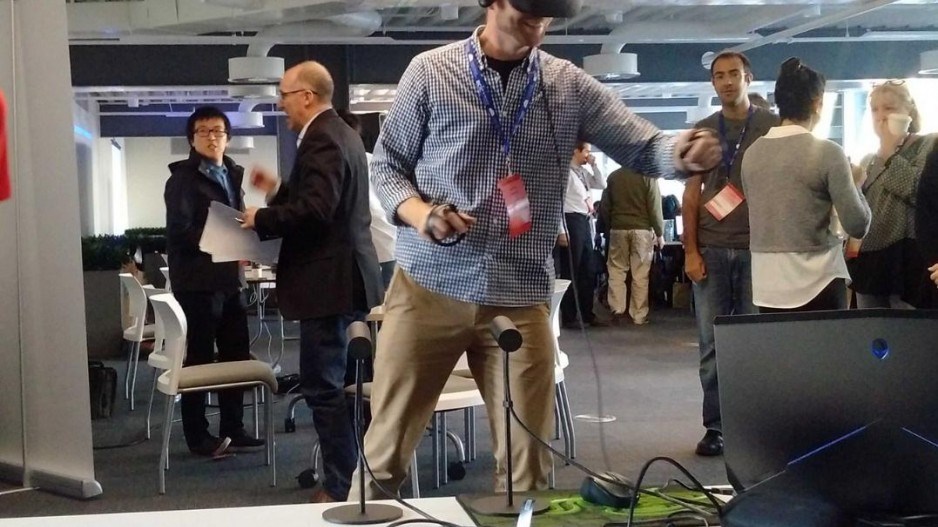What a cruel joke it would be to make beer lovers think they’re about to sip a cold one only to realize the pint within their reach is nothing but a hologram.
The developers at Finger Food Studios aren’t quite so cruel, but the Port Coquitlam company is perhaps the first to combine craft brewing with holographic technology.
Oregon-based craft beer heavyweight Deschutes Brewery has heavy streams of information flowing from meters that monitor equipment throughout its brewing facilities.
But what can the brewers do with it?
Not nearly enough, according to Finger Food Studios CEO Ryan Peterson.
“Deschutes specifically, their core problem is they have all the data in the world, but they have very little information,” Peterson said.
So the developers, the brewers and data management firm OSIsoft partnered to turn all this data into an augmented or mixed reality (AR/MR) application.
After a user dons a Microsoft (Nasdaq:MSFT) HoloLens headset, Finger Food's HoloBridge technology creates life-size holographic brewery equipment that provides brewers with real-time information they can interact with.
The brewer can see how the equipment is behaving and what steps should be taken to adjust the equipment for the best brew possible.
“You could be anywhere in the world looking across the whole brewery and see 35 batches have different things happening at different times and looking at them at a top-down level,” said Finger Food Studios chief operating officer Hunter Smith, who oversaw the Deschutes project.
“You can zoom in because now you’re holographic. You can go from a wide view of the whole place down to [an] individual piece of machinery.”
Beer isn’t the only industry benefiting from the wave of virtual reality (VR) and AR/MR advancements moving beyond the novelty phase and into the utility phase.
During last September’s Vancouver Startup Week, the BC Lottery Corp. (BCLC) sponsored a hackathon that delivered a gaming concept that combined a VR element with mobile phones.
Since then, the BCLC has helped startup Virtro Enertainment Inc. with player feedback to see if the gambling agency would be a good fit as the first customer of this new game.
The BCLC was impressed enough with this first foray into VR that it launched a competition last month seeking submissions for VR/AR applications and computer games that include gambling components.
“We’re in the entertainment business … and entertainment for us is so much about games,” said Richard Fenster, the BCLC’s director of corporate strategy. “And entertaining players is about having new games constantly. What VR does, of course … is immersive.”
He said the key is reaching out to non-traditional developers – those with little or no experience in the gambling business – to come up with new concepts that will attract new players.
Despite the high-tech components, Fenster said, the BCLC isn’t trying to specifically reach demographics like millennials or those under 19, the legal age for gambling.
“Our intention is to reach, frankly, a wider audience – those casual players.”
@reporton



